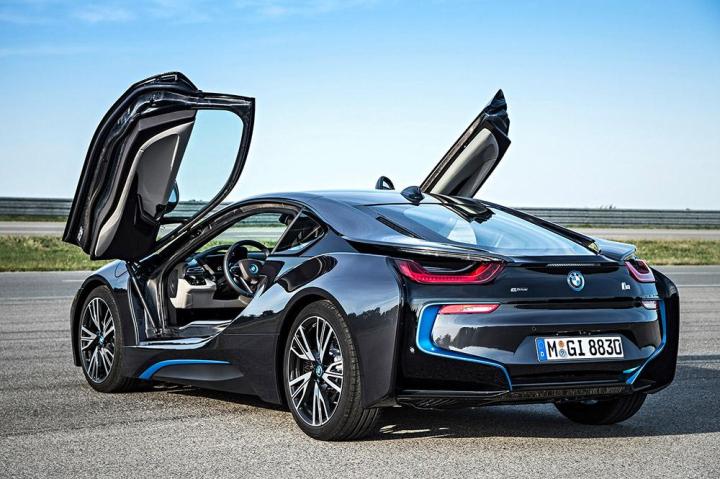
After a long gestation, BMW finally unveiled the production version of its i8 plug-in hybrid sports car at the 2013 Frankfurt Motor Show. It follows the i3 electric city car as the second in BMW’s line of “i” efficient vehicles.
Previewed by the 2009 Vision Efficient Dynamics and 2011 i8 concepts, this low-slung coupe has already become a familiar face to anyone interested in cars. Thankfully, the styling wasn’t changed much in the transition from concept to production.
Underneath that styling is BMW’s “LifeDrive” architecture, with a carbon fiber-reinforced plastic Life Module containing the passenger compartment and an aluminum Drive Module chassis holding the running gear.
Powertrain specs have already been released, but here’s a refresher: the i8 is powered by a 1.5-liter turbocharged inline-three cylinder engine (a “triple”), which produces 231 horsepower and 236 pound-feet of torque. It drives the rear wheels through a six-speed automatic transmission.
There’s also an electric motor with 131 hp and 184 lb-ft, sent through the front wheels. Power comes from a 5-kWh lithium-ion battery pack. Total system output is 362 hp and 236 lb-ft, enough to get the i8 to 62 mph in 4.4 seconds and on to an electronically limited top speed of 155 mph.
The i8 can also drive up to 22 miles on electricity, at speeds up to 75 mph. Admittedly, it’s not much of a sports car in EV mode, but that’s where the efficiency part comes in.
BMW says the i8 will achieve 113 mpg on the European cycle, and says it has a combined (gasoline and electric) range of 430 miles in normal driving.
All that style and technology isn’t cheap, of course, with the i8’s sticker ringing in at about $135,000.
BMW says this car combines the best of both worlds. If it can achieve its fuel economy targets, while still providing a driving experience worthy of its badge, it certainly will be.
- Related reading: How does the i8 stack up against the Tesla Model S?
What do you think of the i8? Leave a comment below.


